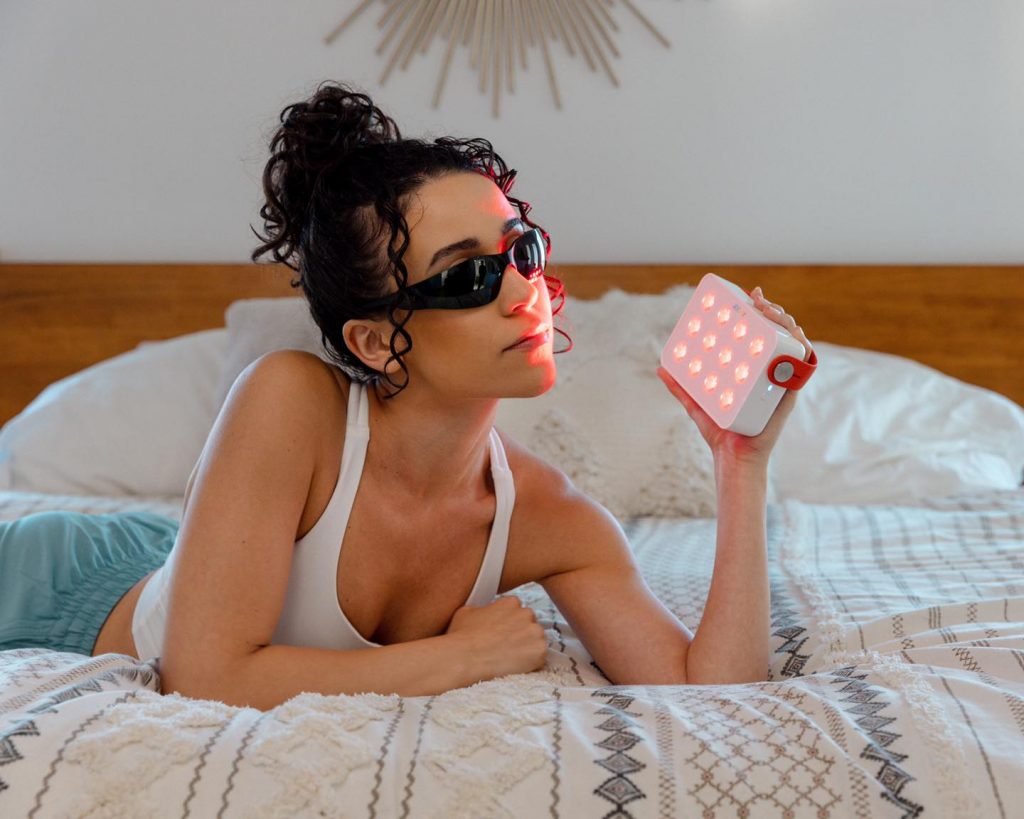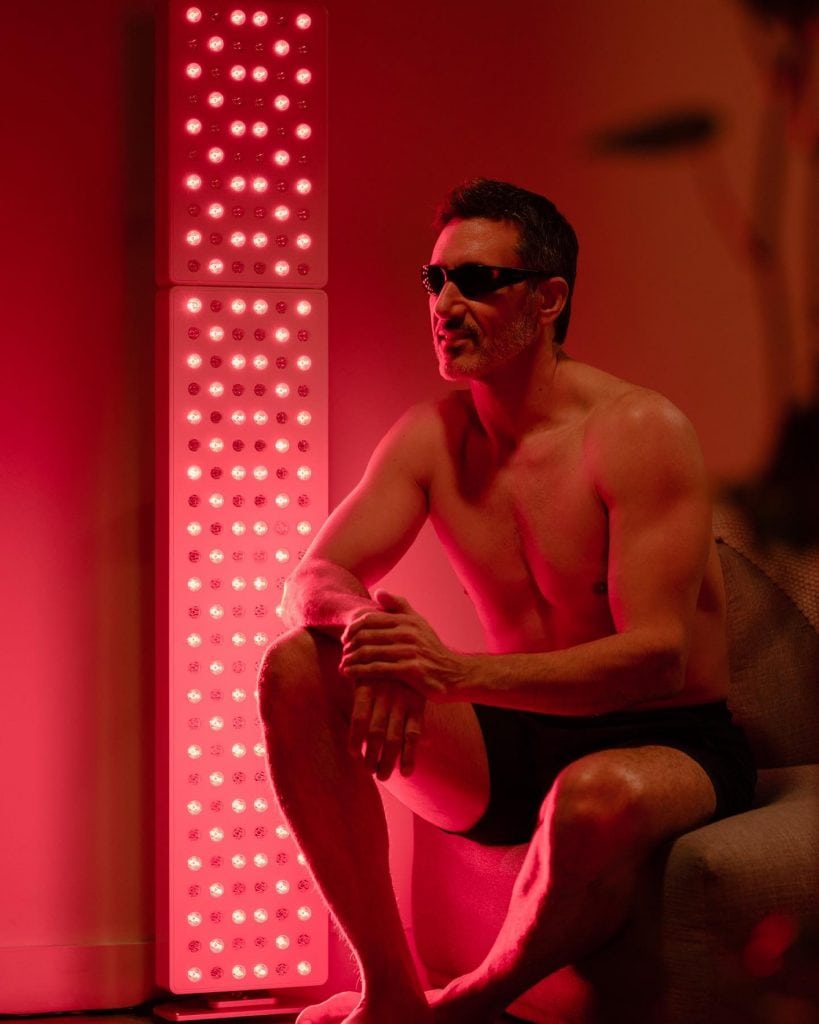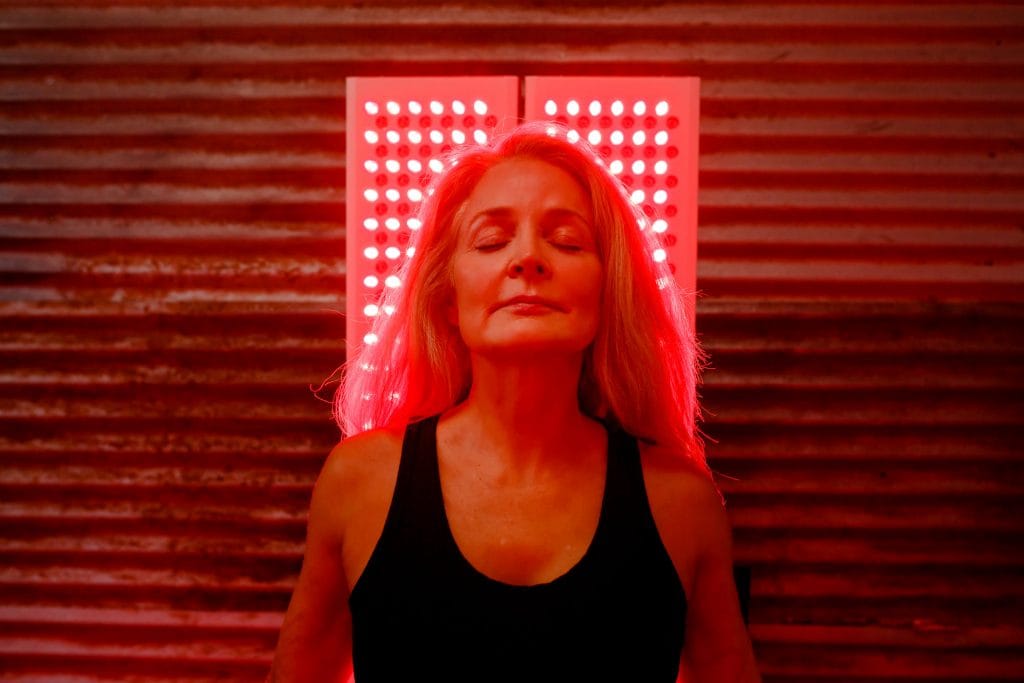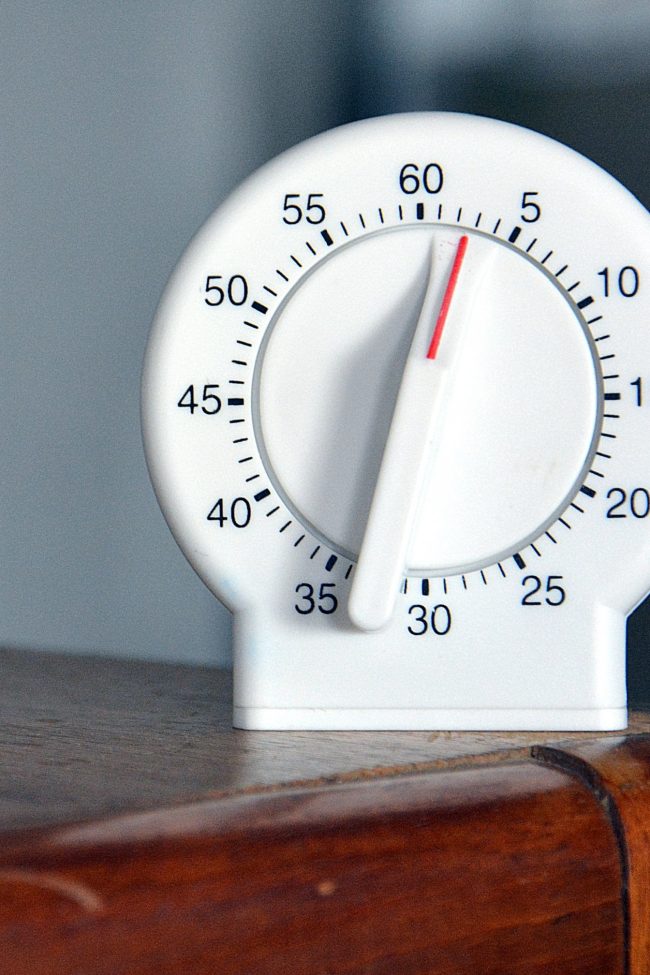Red light therapy is a treatment where you expose yourself to light in the 625 to 1200 nanometer wavelength. Clinical trials show this clears skin, improves heart health and speeds up injury recovery.

But how often should you do red light therapy per week?
This post guides you through everything you need to know about how often you should do red light therapy. I’ll go over session frequency and length while providing some science-backed tips.
Start Slow
Although light therapy treatments doesn’t have adverse side effects, you want to start slow and build your way up because more sessions aren’t always beneficial. Sometimes your body reacts better to three sessions per week compared to seven.
For the first week of red light therapy treatment, use your red light therapy device for 10 minutes every other day. We suggest starting slow because individuals with sensitive skin can experience tightness and redness while getting used to red light.
Feel free to lower the frequency and length if you notice red and tight skin after these short and infrequent sessions. You could also keep the panel further away to reduce intensity.
But once you’re used to frequent sessions, start increasing the intensity and frequency slowly. For the second week, opt for five sessions per week and play around with the frequency, length and power for the next few weeks to find what your body responds to best.
The average sweet spot is 15-minute long sessions, three to five times per week.
But what’s the best time of day to sit in front of your red light?
Best Time Of The Day For Red Light Therapy
The best time to do red light therapy depends on your needs and availability. Here are the best times to use red light therapy based on what you’re trying to manage and treat:
- Sleep
- Circadian rhythm
- Injury recovery and wound healing
- Recovery from gym
- Skin
Sleep
Medical papers show red light therapy treats sleep disorders because it up-regulates melatonin production. So if you’re doing red light therapy for sleep, consider using it a few hours before bed.
Avoid sitting in front of your red light panel directly before bed since the light raises your core body temperature, making it harder to fall asleep. So if you’re heading to bed at 10 PM, do red light therapy between 6 and 8 PM. This way, you increase sleep hormones while giving your body a chance to cool down.
You could even take a lukewarm or cold shower after red light therapy, cooling your body down and making it easier to fall asleep.
Circadian Rhythm
The circadian rhythm is like your biological clock. It tells your body when to produce stimulating hormones like cortisol and adrenaline and sleep hormones like melatonin. Suppose you find yourself sleepy during the day and energetic before going to bed; there’s a good chance your body’s circadian rhythm is out of sync.
One of the best ways of setting your circadian rhythm is with red light therapy. Use red light therapy immediately after waking up because it tells your body it’s time to make cortisol and adrenaline.
If your red light panel has an alarm feature, set it to whatever time you’re waking up, and let the red light regulate your circadian rhythm.
You’ll also find that during the day, you feel more energized. Red light acts on the mitochondria, encouraging them to make more adenosine triphosphate or ATP which increases energy.
Injury Recovery
Although red light effectively treats injuries, it can’t penetrate as deep into your body as near-infrared light. So if you’re recovering from an injury, opt for near-infrared light since it goes into your bone and interior tissues. Fortunately, most panels have a near-infrared option.
If you’re using near-infrared light to treat joint injuries, it doesn’t matter what time of day you use it. But I’d suggest doing it when you’re experiencing pain.
Many athletes recovering from injury often get sharp pains after waking up since the injured joint has been lying in the same position for hours. If you wake up sore, use your red light panel in the morning and it’ll provide quick relief.
Make sure to check out our guide to the best red light therapy devices!
Recovery From Gym
Delayed onset muscle soreness or DOMS is a muscle pain that begins after you’ve worked out. It often happens when you’re new to the gym.
It can take days or even a whole week before DOMS goes away. But luckily, red light therapy speeds up this process significantly.
DOMS occurs because of microtears in your muscle fibers. Your body responds to these tears by triggering inflammation, which is a big reason you feel so sore. Red light therapy reduces this inflammation, speeding up recovery.
Use red light therapy directly before and after your workout. Before your training, the red light provides quick pain relief, while the session after exercise reduces inflammation, lessening future muscle soreness.

Skin
Red light therapy stimulate
- Acne
- Wrinkles
- Rosacea
- Stretch marks
- Eczema
- Psoriasis
It doesn’t matter what time you use red light therapy for your skin. The only thing that matters is consistency. You won’t notice an improvement in your skin after one session because it takes two to three weeks for skin cells to die. So stick to red light therapy for at least 21 days.
I’d suggest finding a convenient time that’s easy to stick to. This could be before bed, when you wake up or while watching TV.
Are You Using Red Light Therapy For A Specific Condition?
How often you should use near-infrared light treatment and the duration depends on your situation since everyone’s body reacts differently. But here are some baselines to follow for each condition you’re trying to treat.
- Skincare and anti-aging
- Improved sleep
- Arthritis and chronic pain
- Chronic skin disorders
Skin Care And Anti Aging
For an improved skin tone and general anti-aging, dermatologists recommend using low level laser therapy three to five times per week with 10 to 12 minutes sessions. Stay consistent with this therapy for one to four months for optimal results.
After this period, feel free to assess your progress with weekly pictures of wrinkles or hair growth. Tweak your frequency and session length based on what your body responds best to.
Improved Sleep
Use LED light therapy for 10 minutes every day before bed. This stimulates melatonin, the sleep hormone, making it easier to fall asleep. However, do red light therapy a few hours before bed to avoid raising your body temperature.
You could also expose yourself to a few seconds of red light as soon as you wake up. This sets your circadian rhythm and tells your body it’s time to produce cortisol and adrenaline.
Once you start noticing your sleep quality increasing and your circadian rhythm is set, decrease the frequency to twice a week. Play around with this frequency to find what works for you, but this is a good starting point.
Arthritis And Joint Pain
Consider using near-infrared light alongside red light when managing arthritis because near-infrared light penetrates deeper into bodily tissues.
One study showed that near-infrared light therapy sessions reduced pain in osteoarthritis patients by over 50 percent. This makes it a practical tool for managing arthritis pain.
Start slowly by using your red light panel twice a week and move up to five times per week since most studies treated pain with this weekly frequency.
Red and NIR light work well because:
- It reduces inflammation
- It improves blood flow to damaged ligaments and tendons
But take caution when using near-infrared light therapy because it can potentially harm your eyes, especially if you’re using a full-body panel.
So stick to using light therapy devices three to five times per week. If you’re an athlete and need to recover quickly for a game, you can get away with using it everyday for a short period. And always remember to wear your eye-protective goggles.

Chronic Skin Disorders
Red light is an effective treatment option for various chronic skin disorders like:
- Rosacea
- Psoriasis
- Vitiligo
- Acne
You might be wondering how red light therapy works for so many skin problems. It works because the increased ATP production reduces inflammation and all these skin conditions trigger inflammation.
Most studies that treated chronic skin issues with red light therapy used a frequency between three to five times per week. As your skin becomes used to red light after a few months, some studies show you can increase the frequency to six times per week.
You may also like our reviews covering Mito and Joovv red light therapy devices!
Final Thoughts On Red Light Therapy Frequency
If you’re looking to heal skin conditions, arthritis, joint pain or an unregulated sleeping pattern, medical studies show the best frequency is around three to five times per week. Your session length should also be approximately 10 to 20 minutes.
Stick to red light therapy for at least 21 days because it takes two to three weeks for skin cells to die.
However, everyone’s different. So use this as a baseline, but play around with the length and frequency and take progress pictures to see which frequency your body responds to best.
Written by
Matt Gaedke
Matt is a former college basketball player turned computer engineer who discovered his passion for health and nutrition after cutting sugar from his diet in 2016. That year he founded KetoConnect with Megha in order to share their ketogenic lifestyle through recipes, videos, and educational content. Matt is always seeking to grow and try new things, a passion he shares with his wife and two amazing sons.


Leave a Comment